It's Not a Benefit If I Don't Think It's a Benefit!
The biggest employer challenge of the next decade (and longer) is in the headlines every day:
▪️ “Record Numbers Quit Job”
▪️ “17 Million Leave Workforce to Be Their Own Boss”
▪️ “More Deaths Than Births Spells Trouble”
So, what’s causing it, and what can employers do? The causes are many: a daunting demographic shift leaving us with fewer workers, professionals deciding they want to run their own “gig,” employees who got a taste of remote work and loved it, employers who were slow to pick up on the needs of potential employees, incredible flexibility made possible by technology, more options, and creative employers who are out front setting the bar high. Regardless, we have seen a seismic shift in the balance of power between the employer and the employee, exasperated by the pandemic but inevitable nonetheless.
And that makes finding and keeping talent more difficult. It also puts compensation and benefits front and center. While much has been written about compensation—target bonuses, referral bonuses, sign-on bonuses, changes in compensation schedules—even more has been going on in the benefits arena. Companies are getting both more strategic and more creative in developing their benefits package.
Strategically, do your benefits align with your employees’ needs and desires? It’s not a benefit if they don’t think it’s a benefit. A young engineer’s most desired benefit might be assistance with their student loan. Right now, that is more important to them than retirement and PTO. A machinist with three young kids? Health care, health care, and more health care!
What about a stay-at-home parent who wants to work, but the cost of child care wipes out the majority of their income? A company might think there is nothing they can do about that, but they would be wrong. The company could strategically hire parents with young children and help coordinate child care coverage with employees in the same situation; for example, two people, taking half of a job, and swapping child care responsibilities.
Or the manufacturing facility that found when they offered their employees the choice of a 5-day week, a 4-day week, or a 3-day/4-day week, they overwhelmingly chose the 3/4. It was a group who enjoyed fishing, hunting, ATV riding, and other outdoor activities, and their employer just offered them long weekends. That is now a tough job to leave.
The simple question: Where do we put our resources to attract the talent we need? Offer the benefits they desire! We can’t provide everything, but we can be the best at something. Is that bigger investment in health care? In retirement benefits? Vacation days? Or is it something we have never offered before?
And what about creativity? Many articles are being written about the younger generations and their preferences. They value things like purpose, advancement, development, working with smart people, up-to-date technology, flexibility, and entrepreneurship. Innovative employers are working overtime to ensure new employees have a clear career plan and a professional development strategy to match. Providing a clear picture of opportunity through employee education is a valuable benefit and builds employee loyalty.
Mentoring programs and reverse mentoring opportunities give new and old employees a special recognition. Mentoring shows the employer is interested in the employee’s development. Being asked to be a reverse mentor—helping a more seasoned or senior coworker with a skill set they may be weaker in (think technology or presentation skills, two things younger workers excel at)—shows the company recognizes the employee’s proficiencies.
Finally, a few benefits that eased the stress of pandemic life: house-cleaning services, a subscription to Audible, Netflix, or Amazon Prime, fitness memberships, pet insurance, and travel discounts.
At this point in time, the talent has the advantage over the employer. There are simply more jobs than people. The employer who understands their target workforce, knows what they need, and puts in place a plan that includes creative compensation and benefits packages is the company that will be the employer of choice.
To learn more about total rewards that best benefit and motivate your teams, contact Jan Edman at Jan.Edman@mranet.org and visit our website at www.mranet.org to learn more about what MRA can do for you!




